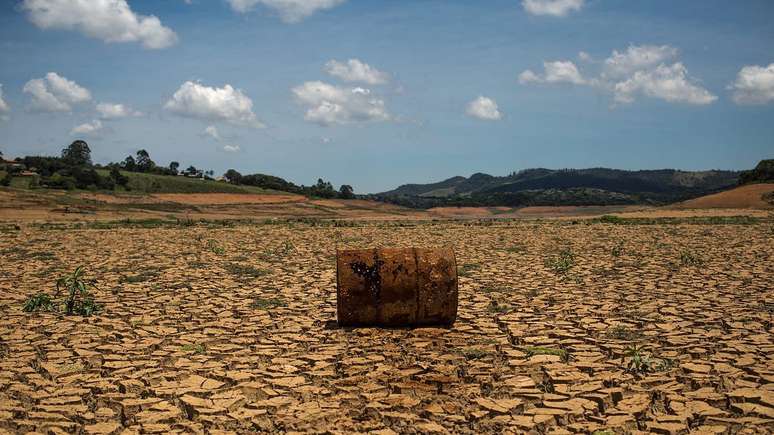Since Cemaden began monitoring rainfall in Brazil, the north and northeast have never had such a deep drought: the phenomenon affects the population, agriculture and fauna
According to investigations by the National Center for Monitoring and Warning in Natural Disasters (Cemaden), eight states in the north and north-east of Brazil experience the worst drought since monitoring began rainy weather in the region in 1980. The last few weeks in the region have been characterized by water shortages, landslides and mass death of animals.
- The Amazon is in grave danger due to increasingly frequent droughts
- The Euphrates River is drying up; what does it mean?
The worst drought in 40 years has hit Acre, Amapá, Amazonas, Bahia, Maranhão, Pará, Piauí and Sergipe so far, according to a Cemaden data collection carried out by G1. The lack of rain especially affected the rivers of the Amazonlike the Rio Negro, which runs through Manaus, reached 15.29 meters last Monday (2), and is only 1.66 m away from reaching the record low of 13.63 m, recorded in 2010.
The drought here in the Amazon produces impressive images. For me, the Amazon has always been a world rich in water and greenery. Of course this is still the case. But the impacts of this drought are terrifying. pic.twitter.com/9DN6Zxp2HE
— Yan Boechat (@Yanboechat) October 5, 2023
The Solimões River, in turn, reached -43 centimeters on September 22. This is the second worst drought to have hit it, according to information from the weekly bulletin of the Brazilian Geological Survey (CPRM). The National Research Institute (Inpe) is also involved in satellite monitoring of the region.
El Niño and drought
Scientific investigations indicate that drought is influenced by El Ninoa phenomenon that shows special force this year. Normally, droughts in northern and northeastern regions end in November, but forecasts show it is expected to extend this time, lasting until January 2024 as rain returns to the United States. So far the most critical moment of the drought was between September 19th and 29th.
Among the disasters caused by the phenomenon is a collapse on the banks of the Solimões river last Friday (29th), which destroyed eight houses, but left no injuries in Coari, 363 km from Manaus, the capital of the Amazon. Another landslide hit the Purus river last Saturday (30), causing two deaths, three missing and more than 200 injured in Arumã, a community in the municipality of Beruri, 263 km from Manaus.
A historic drought is affecting the rivers of the Amazon, with over 120 dolphins found dead! Water temperatures are higher than ever and river dwellers are finding it difficult to fish and travel.
This is the new normal from now on, death and heat. pic.twitter.com/kUa1UJcE8h
— Brazilian Biodiversity (@BiodiversidadeB) September 30, 2023
Another Amazon tributary, Lake Tefé, has been strewn with porpoise corpses over the past week, with at least 120 seen floating. When the river level drops too much, the water becomes too hot for animals, according to experts. The mass of water reached 39ºC in the middle of the heat wave From the region.
Low soil moisture has negatively affected agricultural and livestock production in the United States, with 79 municipalities affected, nine more than in the United States. August, when 70 people were already experiencing extreme drought. In Pará, 55 of the state’s 144 municipalities suffered from drought in September and of these, 22 affected more than 80% of agricultural production areas. In Roraima the situation is also serious, with more than 80% of the agricultural areas affected in 13 of the 15 municipalities.
Source: Cemaden through G1Earth, Ministry of Science, Technology and Innovation
Trends on Canaltech:
- What will the 2023 solar eclipse look like?
- US says Huawei’s new chip is ‘incredibly disruptive’
- Sound of Freedom | Why has a Christian film become the subject of controversy?
- Acer Nitro 5 Review | A good value gaming notebook with Core i5
- Meet the “orfinho”, a hybrid animal between an orca and a dolphin
- Android 14 is released with a focus on customization and accessibility
Source: Terra
Rose James is a Gossipify movie and series reviewer known for her in-depth analysis and unique perspective on the latest releases. With a background in film studies, she provides engaging and informative reviews, and keeps readers up to date with industry trends and emerging talents.




![Such a great sun in advance: Elizabeth’s Terrible Accidental Victims … which Waiting for You Week until August 25, 2025 [SPOILERS] Such a great sun in advance: Elizabeth’s Terrible Accidental Victims … which Waiting for You Week until August 25, 2025 [SPOILERS]](https://fr.web.img6.acsta.net/img/d0/c4/d0c4d9256b5997c98008a65d7a43177e.jpg)

